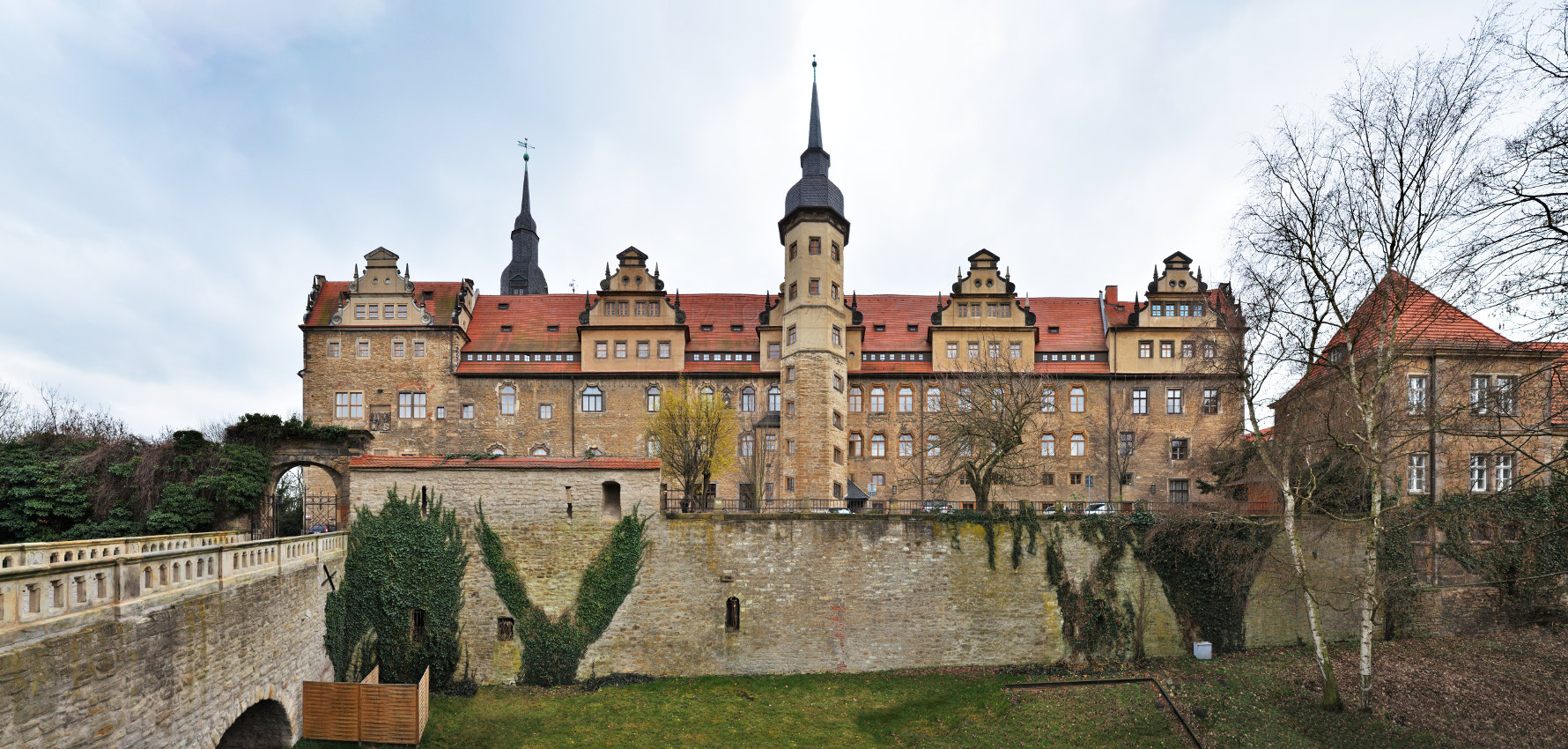The north side of Merseburg Castle stretches along the old moat and overlooks the castle garden opposite. The castle was built as a three-winged complex, with the Merseburg Cathedral (rear side, not shown here) as the fourth wing closing off the castle courtyard.
The history of Merseburg Castle
In its long history, Merseburg Castle has served as a royal palace, bishop’s seat and ducal residence, among other things. The diocese of Merseburg was established under Otto I in 968 and the first castle was built in the mid-13th century under Bishop Heinrich von Warin. Under Bishop Thilo von Trotha, the present three-winged complex plus Merseburg Cathedral was created at the end of the 15th century. During extensive renovations from 1604 to 1605 under Melchior Brenner on behalf of John George I of Saxony, the palace was given its current magnificent Renaissance design.
Originally the seat of a bishop, the castle came into the possession of the Saxon electors in the 16th century and was given a collegiate government. From 1656 to 1738, the castle was the residence of the secondary principality of Saxe-Merseburg, a collateral line of the Albertine Wettins. In the 19th century, it was converted into an administrative centre and initially served the Prussian district government. Today it is the seat of the Saalekreis district administration.
It is also home to the Johann-Joachim Quantz District Music School and the Museum of Cultural History, which was founded in 1906. The museum presents the history and development of the town of Merseburg from prehistory and early history to the present day, with a focus on the period of the baroque residence of the Dukes of Saxe-Merseburg. Other focal points are the permanent exhibition on glass beadwork and a collection of ancient and bizarre ignition devices and lighters. The castle also served as the backdrop for George Clooney’s film Monuments Men.


